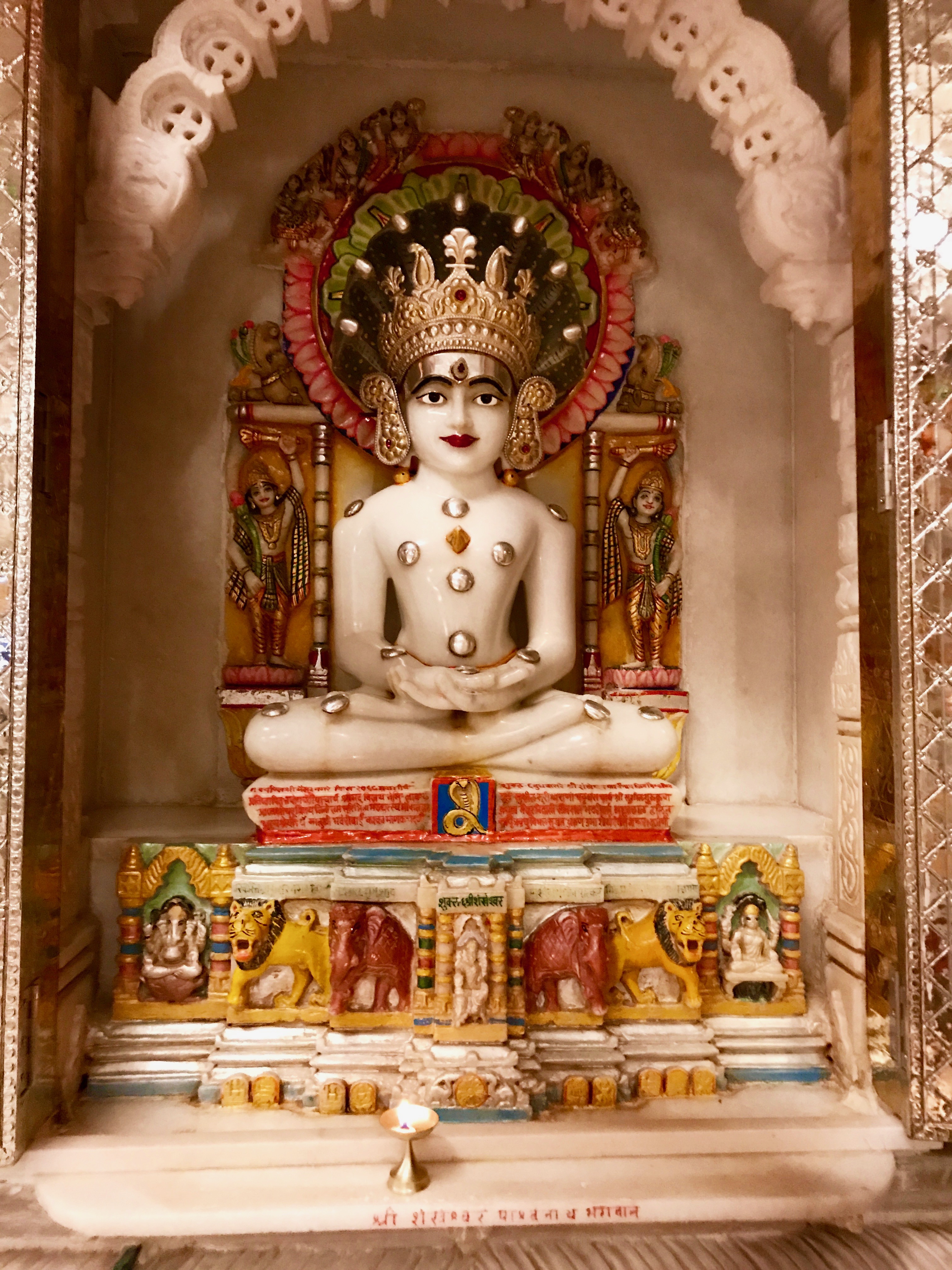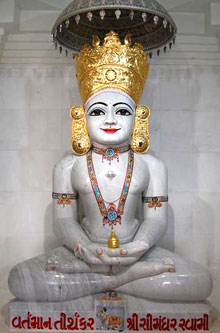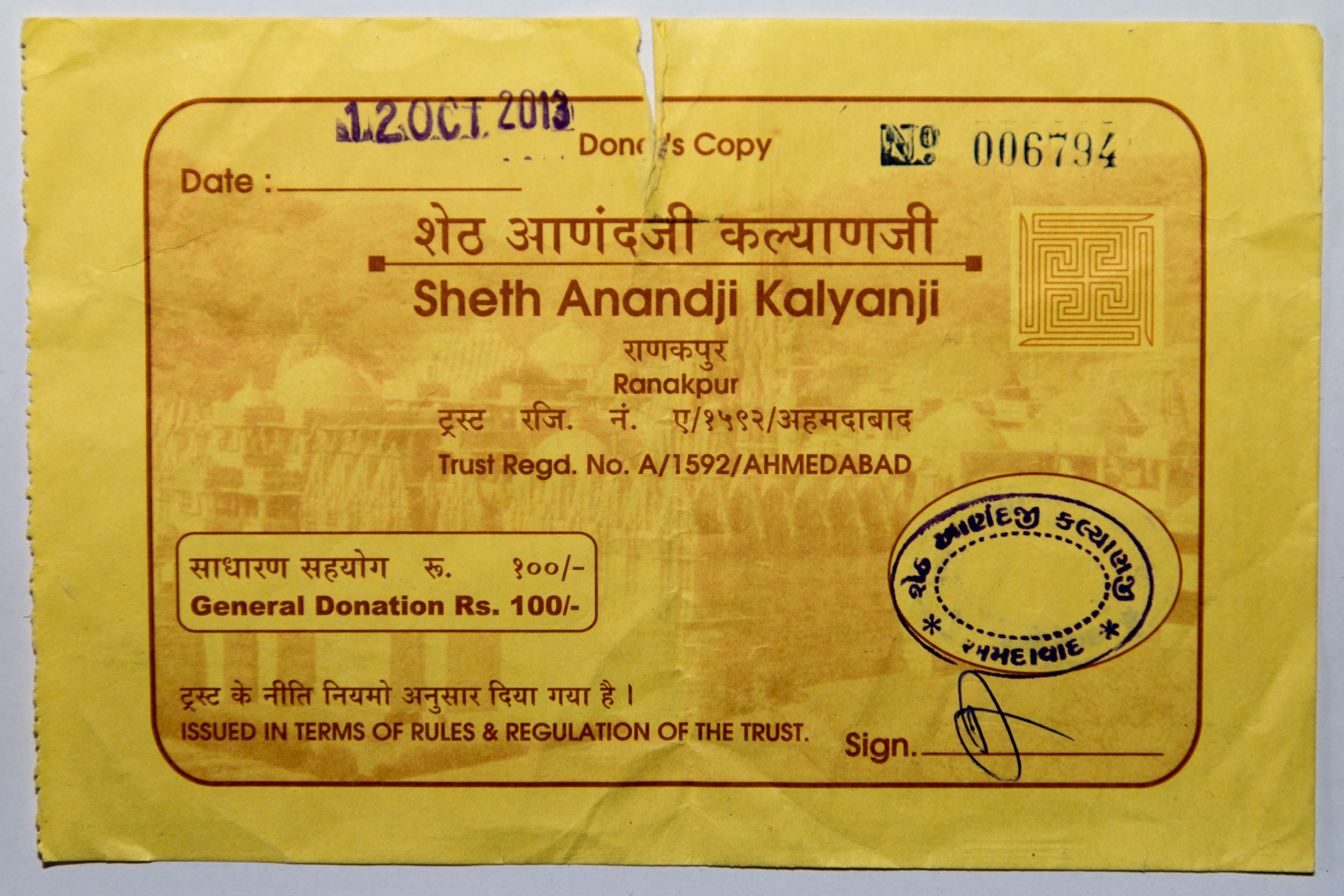|
Tapa Gaccha
Tapa Gaccha is the largest Gaccha (monastic order) of Svetambara Jainism. History Tapa Gaccha was founded by Acharya Jagatchandra Suri in Vikram Samvat 1285 (1228 AD). He was given the title of "Tapa" (i.e., the meditative one) by the ruler of Mewar. This title was applied to the group. Under Vijayanandsuri's leadership and other monks, Shwetambara Murtipujak Conference was established in 1893 which reformed mendicant as well as lay religious practices. As a result of this reform, most Shwetambara Jain monks today belong to Tapa Gaccha. Today, the majority of its followers live in states such as Gujarat, Maharashtra, Tamil Nadu, West Bengal, Punjab and Rajasthan. Denominations Later Tapa Gachha is followed by 21 different ''samuday'' or orders. The sects follow different rituals but they do not have differences about scriptures. Some of these differences include ''Tithi'' (calendar date), veneration of gurus, pilgrimage of Palitana temples during monsoon and ''Santikara ... [...More Info...] [...Related Items...] OR: [Wikipedia] [Google] [Baidu] |
Gaccha
Gaccha, alternatively spelled as Gachchha, is a monastic order, along with lay followers, of the image worshipping Murtipujaka Svetambara sect of Jainism. The term is also used in the Digambara sect. Etymology ''Gaccha'' literally means "who travel together". History According to Jain tradition, in the first century, Vajrasensuri established four ''Kulas'', subdivisions within the Swetambara Murtipujaka Jain community, to divide the community during time of drought to disperse them. They were: Chandra, Nirvriti, Vidyadhar and Nagendra. During 1000 to 1300 CE, the Gaccha replaced these ''Kula'' as basic divisions of community. Although some 84 separate gacchas have appeared since the 7th–8th century, only a few have survived, such as the Kharatara (located mainly in Rajasthan), the Tapa, the Achala, the Paichand or Pashwachandra, the Vimal and the Tristutik Gaccha. While the gacchas do not differ from one another in matters of doctrine, they do differ on issues of practice ... [...More Info...] [...Related Items...] OR: [Wikipedia] [Google] [Baidu] |
Ramchandrasuri
Ramchandrasuri (1896 – 1991) was a Jain monk and scholar . Biography Ramchandrasuri was born on 3 March 1896 (Falgun Vad 4, Vikram Samvat 1952) in Padara village (now in Gujarat). He was a disciple of Acharya shri Prem Surishwarji and was initiated in monkhood by Muni Mangalvijayji at Gandhar (now in Gujarat) in 1912 (Pushya Vad 13, VS 1969). He died in 1991 (Ashadha Vad 15, VS 2047). The centenary of his initiation in asceticism was celebrated in Palitana, Ahmedabad, Mumbai and Gandhar in 2012. Order Ramchandrasuri established the Ramchandrasuri Samuday, an order of Tapa Gaccha sub-sect of Svetambara Jainism. The Gachhadhipati, head of the Samuday, Hembhushansuri died in 2008 at Delhi Delhi, officially the National Capital Territory (NCT) of Delhi, is a city and a union territory of India containing New Delhi, the capital of India. Straddling the Yamuna river, primarily its western or right bank, Delhi shares borders w .... On 29 March 2011, Punyapalsuri was app ... [...More Info...] [...Related Items...] OR: [Wikipedia] [Google] [Baidu] |
Śvētāmbara Sects
The Śvētāmbara (; ''śvētapaṭa''; also spelled ''Shwethambara'', ''Svetambar'', ''Shvetambara'' or ''Swetambar'') is one of the two main branches of Jainism, the other being the ''Digambara''. Śvētāmbara means "white-clad", and refers to its ascetics' practice of wearing white clothes, which sets it apart from the ''Digambara'' "sky-clad" Jains, whose ascetic practitioners go naked. Śvētāmbaras, unlike Digambaras, do not believe that ascetics must practice nudity. The Svetambara and Digambara traditions have had historical differences ranging from their dress code, their temples and iconography, attitude towards Jain nuns, their legends and the texts they consider as important. Svetambara Jain communities are currently found mainly in Gujarat, Rajasthan and coastal regions of Maharashtra. According to Jeffery D. Long, a scholar of Hindu and Jain studies, about four-fifths of all Jains in India are Svetambaras. History Majority of the Svetambaras are ''murtipujak ... [...More Info...] [...Related Items...] OR: [Wikipedia] [Google] [Baidu] |
Gulabchand Hirachand Doshi
Gulabchand Hirachand Doshi (1896–1967) was scion of Walchand group, noted industrialist, philanthropist and a Nationalist. Background Gulabchand was a son of Hirachand Doshi from his second marriage and was half-brother of Walchand Hirachand, who was born from the first marriage of his father. He was born in Solapur, Bombay Presidency on September 23, 1896 into a Gujarati Jain family, who originally hailed from Wankaner in Gujarat. The name of his other brothers were Lalchand Hirachand and Ratanchand Hirachand. Activist From the years 1944–1945 Gulabchand was President of the Maharashtra Hindu Sabha and close associate of Veer Savarkar. In the 1930s, he was imprisoned by British for his nationalist activities Walchandnagar Industries Gulabchand was responsible for the modernization and transformation of the flagship group company, Walchandnagar Industries, from growing sugarcane to diversification into other core manufacturing businesses, when he was given charge of the com ... [...More Info...] [...Related Items...] OR: [Wikipedia] [Google] [Baidu] |
Oxford University Press
Oxford University Press (OUP) is the university press of the University of Oxford. It is the largest university press in the world, and its printing history dates back to the 1480s. Having been officially granted the legal right to print books by decree in 1586, it is the second oldest university press after Cambridge University Press. It is a department of the University of Oxford and is governed by a group of 15 academics known as the Delegates of the Press, who are appointed by the vice-chancellor of the University of Oxford. The Delegates of the Press are led by the Secretary to the Delegates, who serves as OUP's chief executive and as its major representative on other university bodies. Oxford University Press has had a similar governance structure since the 17th century. The press is located on Walton Street, Oxford, opposite Somerville College, in the inner suburb of Jericho. For the last 500 years, OUP has primarily focused on the publication of pedagogical texts an ... [...More Info...] [...Related Items...] OR: [Wikipedia] [Google] [Baidu] |
Jain Schools And Branches
Jainism is an Indian religion which is traditionally believed to be propagated by twenty-four spiritual teachers known as ''tirthankara''. Broadly, Jainism is divided into two major schools of thought, Digambara and Svetambara. These are further divided into different sub-sects and traditions. While there are differences in practices, the core philosophy and main principles of each sect is the same. Schism Traditionally, the original doctrine of Jainism was contained in scriptures called Purva. There were fourteen Purva. These are believed to have originated from Rishabhanatha, the first ''tirthankara''. There was a twelve-year famine around fourth century BCE. At that time, Chandragupta Maurya was the ruler of Magadha and Bhadrabahu was the head of Jain community. Bhadrabahu went south to Karnataka with his adherents and Sthulabhadra, another Jain leader remained behind. During this time the knowledge of the doctrine was getting lost. A council was formed at Pataliputra whe ... [...More Info...] [...Related Items...] OR: [Wikipedia] [Google] [Baidu] |
Kharatara Gaccha
Kharatara Gaccha is one of Shvetambara Murtipujaka Gacchas. It is also called the Vidhisangha (the Assembly) or Vidhimarga (Path of Proper Conduct), as they regard their practices as scripturally correct. History Kharatara Gaccha was founded by Vardhamana Sūri (till 1031). His pupil, Jineshvara, got honorary title 'Kharatara' (Sharp witted or Fierce) because he defeated Suracharya, leader of Chaityavasis in public debate in 1023 at Anahilvada Patan. So the Gaccha also got his title. Khartara also means that "which is beyond" (tara) "purity" (khara), that is, being upright with the absolute truth, by following the religious scriptures without deviation ( Jain Agamas) as it is. Another tradition regards Jinadatta Suri (1075-1154) as a founder of Gaccha. In the Khartara tradition, there have been numerous influential and masterly ascetics, who researched and developed extensively in the fields of literature, astrology, history, Ayurveda, right way of perception among various ... [...More Info...] [...Related Items...] OR: [Wikipedia] [Google] [Baidu] |
Tristutik Gaccha
Mūrtipūjaka (lit. "image-worshipper"), also known as Derāvāsī ("temple-dweller") or Mandir Mārgī ("follower of the temple path"), is the largest sect of Śvetāmbara Jainism. Mūrtipūjaka Jains differ from both Śvetāmbara Sthānakavāsī and Śvetāmbara Terāpanthī Jains in that they worship images of the Tīrthaṅkaras. Mūrtipūjaka may also generally describe members of both the Śvetāmbara and Digambara traditions who use idols ('' mūrti'') in their worship (''pūjā''). Agreements and disagreements According to Nalini Balbir, all Śvetāmbara sects agree upon "the authority of the Śvetāmbara canonical scriptures, with slight differences; claims of monastic descent from Sudharman, except for the Upakeśa-gaccha; ndwhite monastic robes ormonks and nuns." However, despite these commonalities, a central division exists between each of the sects as related to the use of images in worship. Indeed, the early Jain reformer Loṅkā Śāh used the term "mūr ... [...More Info...] [...Related Items...] OR: [Wikipedia] [Google] [Baidu] |
Sandalwood
Sandalwood is a class of woods from trees in the genus ''Santalum''. The woods are heavy, yellow, and fine-grained, and, unlike many other aromatic woods, they retain their fragrance for decades. Sandalwood oil is extracted from the woods for use. Sandalwood is often cited as one of the most expensive woods in the world. Both the wood and the oil produce a distinctive fragrance that has been highly valued for centuries. Consequently, some species of these slow-growing trees have suffered over-harvesting in the past. Nomenclature The nomenclature and the taxonomy of the genus are derived from this species' historical and widespread use. Etymologically it is ultimately derived from Sanskrit चन्दनं ''Chandana'' (''čandana''), meaning "wood for burning incense" and related to ''candrah'', "shining, glowing" and the Latin ''candere'', to shine or glow. It arrived in English via Late Greek, Medieval Latin and Old French in the 14th or 15th century. The sandalwood is indige ... [...More Info...] [...Related Items...] OR: [Wikipedia] [Google] [Baidu] |
Anandji Kalyanji Trust
Anandji Kalyanji Trust (Gujarati શેઠ આનંદજી કલ્યાણજી પેઢી) is the largest and the oldest Jain trust, managed by lay Jains, with headquarters at Ahmedabad which manages more than 1200 Jain temples. The original charitable trust is said to have been founded somewhere in decades of 1630–40 AD and is running under name ''Anandji Kalyanji ni Pedhi'' or Anandji Kalyanji Trust since decade of 1720. History Initially founded to manage the Shatrunjaya Palitana temples, it now manages numerous Jain tirthas and temples belonging to the Shvetambara tradition. It is said to have been founded by Shantidas Zaveri and its leadership has been in the same family for generations, who have been the Nagar-seths of Ahmedabad. Kasturbhai Lalbhai, an industrialist and educationist, who was the eleventh generation member, headed the trust for 50 years, followed by Shrenik Kasturbhai Lalbhai for 30 years. Samveg Lalbhai now heads the trust. Bhavarlal Na ... [...More Info...] [...Related Items...] OR: [Wikipedia] [Google] [Baidu] |
Paryushan
Das Lakshana'' or ''Paryushana is the most important annual holy event for Jains and is usually celebrated in August or September in Hindi calendar (indian calendar) Bhadrapad Month's Shukla Paksha. Jains increase their level of spiritual intensity often using fasting and prayer/meditation to help. The five main vows are emphasized during this time. There are no set rules, and followers are encouraged to practice according to their ability and desires. Normally, ''Digambaras'' refer it as ''Das Lakshana Dharma'' while '' Śvētāmbaras'' refer to it as ''Paryushana'' ("abiding" or "coming together"). The duration of ''Paryushana'' is for 8 days for ''Śvētāmbara'' Jains and 10 days for Jains belonging to the ''Digambara'' sect. The festival ends with the celebration of Samvatsari or '' Kshamavani'' (forgiveness day). Meaning ''Paryushana'' means "abiding and coming together". It is a time when the Jains take on vows of study and fasting. Observances The ''Digambara'' ... [...More Info...] [...Related Items...] OR: [Wikipedia] [Google] [Baidu] |
Samvatsari
''Saṃvatsari'' ( sa, संवत्सरी) (lit. Annual Day or fig. Forgiveness Day) is the last day of ''Paryushana'' Shwetambar sect of Jainism. It falls on Shukla Panchami each year in the Jain calendar month of Bhadrapada, somewhere between the middle of August and September in the Gregorian calendar. On this day, Jains forgive and seek forgiveness for their mistakes committed knowingly or unknowingly from all the living beings. A yearly, elaborate penitential retreat called "''samvatsari pratikramana''" is performed on this day. After the ''pratikramana'', Jains seek forgiveness from all the creatures of the world, including friends and relatives by uttering the phrase — '' Micchami Dukkadam'' or its variants like "Khamau Sa", "Uttam Kshama" or "Khamat Khamna". Etymology Samvatsari is derived Sanskrit language. ''Samvatsara'' refers to a "year" in Vedic literature such as the ''Rigveda'' and other ancient texts. Thus, Samvatsari literally refers to a day that ... [...More Info...] [...Related Items...] OR: [Wikipedia] [Google] [Baidu] |

.jpg)



